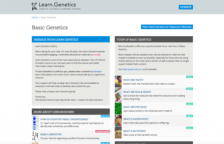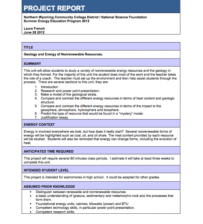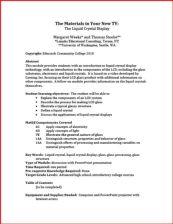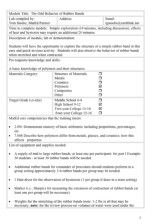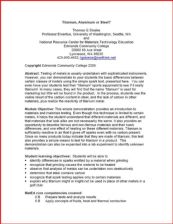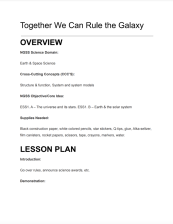Browse Resources
Instructional Material -- Lesson/Lesson Plan
Resources |
|---|
This website presents an animated "tour" of the basics of DNA and genes. Students will get the chance to learn more about DNA, genes, chromosomes, proteins, traits and heredity.
This lesson, from the Northern Wyoming Community College District, focuses on the geology of nonrenewable energy resources, including coal, oil, and oil shale. Over the course of the lesson students create a model of geological strata; compare and contrast the heat content and geologic structure of...
This module introduces the liquid crystal display, including glass substrates, electronics and liquid crystals. Learning objectives include explaining the components of the LCD system, describing the process of making LCD glass, illustrating a typical glassy structure, defining a liquid crystal, and...
This lesson, created by JoAnn Flejszar, allows students to trace the steps of the Nuclear Fuel Cycle beginning with the mining process, and ending when the fuel rods are ready to be loaded into the fuel assembly for use in a nuclear reactor. Using real-life examples from China, India, and France –...
In this laboratory module, students will have the opportunity to explore the structure of a simple rubber band in this easy and quick in-class activity. Students will also observe the behavior of rubber bands when stretched and when contracted. The module is about 30 minutes long, appropriate for...
Penguin Tutor, created by Stewart Watkiss, includes projects that can be recreated at home (or by students) by following simple instructions and circuit diagrams that Watkiss has provided. The exercises are based around Arduino software using discrete components. The examples and descriptions on his...
The Robot Archeologist is a lesson plan designed for Earth Science or Mathematics students in grades 9-12. This lesson plan was published by National Oceanic and Atmospheric Administration's (NOAA) for their Autonomous Underwater Vehicle Festival 2008 (AUVfest 2008), which addressed how AUVs can be...
Published by the National Nanotechnology Coordinated Infrastructure, and created by Alonda Droege and the University of Washington, this 50-minute activity "explores how nanotechnology can be used to change the properties of a surface so that it either attracts or repels water." The Teachers' Guide...
This document provides a learning module on the basic differences between metal types and how to test metals. The lesson includes demonstrating the spark test to students so that they may see the "Visible result of the carbon content in steel, and the lack of carbon in other materials, plus realize...
This lesson from the STEM Action Center - Utah covers astronomy and our solar system. The lesson is intended for grades K-5 and includes the aligning CORE standard. During the lesson, teachers go over Earth's axis, rotation, and revolving with older grades. Younger grades learn about constellations...
|
| ← PreviousNext → |
